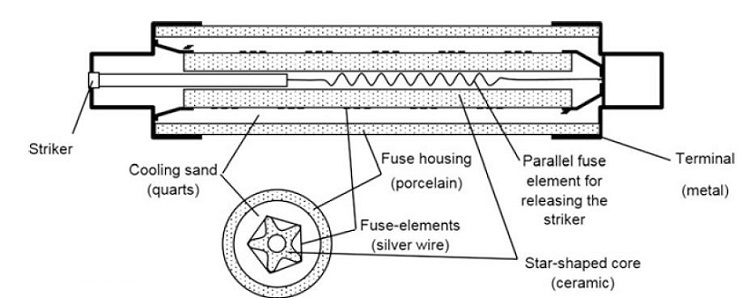
For medium voltage fuse it is often necessary to have fuse elements that are longer than the fuse body. This is realized by winding the fuse elements on an electric insulating core. This winding core has a star-shaped cross-section to make sure that the fuse element is surrounded by sand more or less on all sides. The fuse element is made of silver, and commonly several elements are put in parallel. It is particularly the good properties of silver at high temperatures (little corrosion/oxidization) and the good electric conductivity which make it very suitable as a fuse element.
The sand should be quarts (SiO2), and the quality with regard to purity, grain size and particle shape is of great importance for its arc cooling properties. Fuses are often equipped with an alarm system for indication and for initiation of a breaker operation. This may be achieved by placing a relatively poorly conducting wire in parallel with the fuse element. As the fuse element melts, the current commutes to the parallel wire inside the winding core. This then quickly melts off and releases the spring charged striker pin. The striker pops out and can be used to automatically trip a switchgear.



